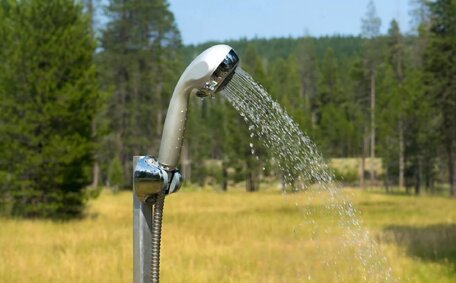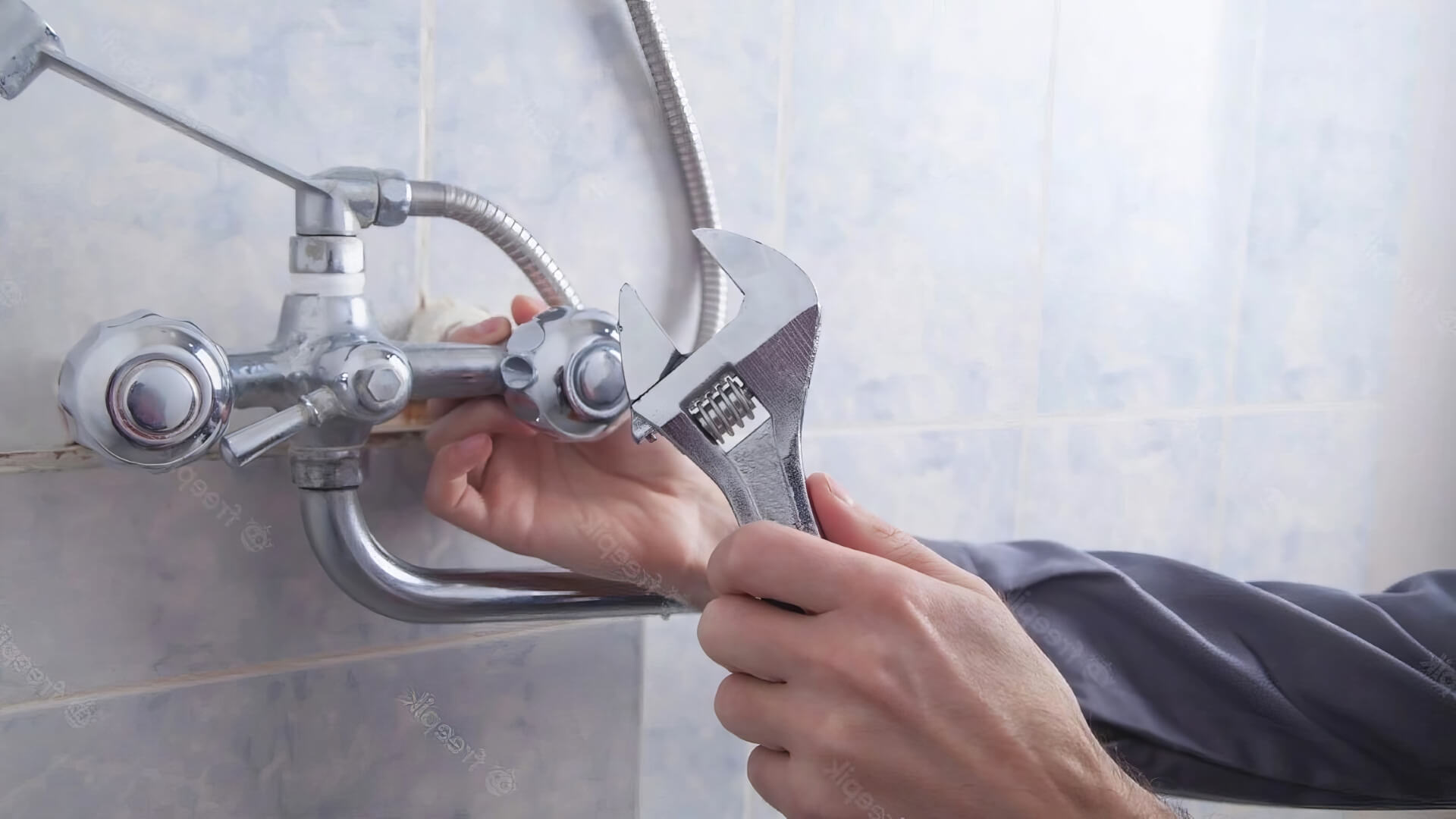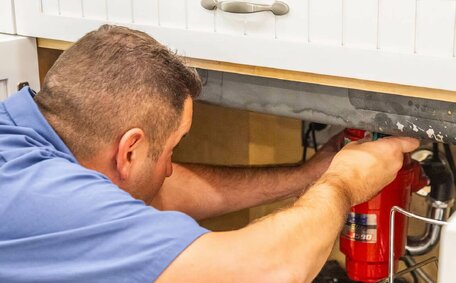Introduction: Reasons You Might Need to Turn Off Gas Supply
There are a few key reasons why you may need to turn off your gas supply:
- If you detect a gas smell or suspect a leak, it’s imperative to shut off gas and turn off water supply immediately as a safety precaution.
- Before carrying out maintenance, repairs, or servicing on any gas appliance, it’s necessary to consider 'how do i switch off the supply?'; it’s recommended to do so.
- When pilot lights of appliances require relighting.
- Before vacating your property for a prolonged period,
Understanding how to find and operate your gas meter’s shutoff valve empowers you to manage all gas-dependent appliances at home. Becoming knowledgeable about your gas systems can reassure you and enable prompt action during emergencies or renovation work.
Locating Your Gas Meter Shut-Off Valve
Your home’s gas controls are commonly located inside the meter box on the exterior wall. The enclosure contains the shutoff valve, which is the primary control to halt the gas flow. Turn the tap connected to the shutoff valve 90 degrees to change it from the 'on’ to 'off’ position.
Upon locating the gas meter box, open the lid and confirm the gas supply is off by inspecting the position of the shutoff valves. Clearly identifying the valve and comprehending the shutdown procedures ensures complete and safe halt of the gas supply.
There may also be a bleed valve inside the box - this releases pressurised gas, so should not be touched unless instructed by the gas company.
In a unit complex, you don’t want to overlook the valve located in a centralised cupboard situated between meter enclosures, storing the entire building’s gas and water connections. Reach out to your strata management for access details to this secure area that helps supply gas to your apartment via the central supply pipe in the building.
Preparing to Turn Off the Gas Supply
It’s vital to ensure your stove and all gas appliances are turned off and that there are no pilot lights alight in your home before engaging the shut off valve, as your gas supply should not be active during this process. This readies your system and helps prevent any gas leaks once you’ve turned off gas supply your property relies on.
Walk around your house, ensuring areas like the kitchen and laundry, where the gas stove and water heater are located, are attended to, and make sure all related appliances are switched off via the main shutoff valve. Turn appliance knobs/dials to the ‘off’ position.
Find the pilot light access on water heaters and other appliances and turn the internal screw clockwise to extinguish the flame, thereby turning off the gas. Refer to your hot water system or other appliance manual if you’re unsure.
After ensuring all gas appliances and pilot lights are off, you can safely switch the main gas supply valve to the 'off’ position to prevent potential gas leaks.
Turning Off Pilot Lights
Ensure all appliance pilot lights are turned off before shutting off the gas supply at the main valve. This prevents potential gas build-up and leakage once the supply is off.
To turn off a pilot light, locate the small metallic tube leading to the flame. To discover how turn the pilot light off, gently twist the screw inside the tube in a clockwise direction with an adjustable spanner or screwdriver until you feel resistance and the flame dies out.
For specific appliance instructions, consult the user manual or seek guidance from gas service professionals. With certain appliances, it may be necessary to remove a front panel to access the pilot light tube. Exercise caution when doing this.
Once all pilot lights are extinguished, no further gas supply can venture from your home appliances when the main source is disconnected. Do I turn the pilot flames back on immediately? Always relight as soon as possible after turning the gas back on using the appliance manufacturer’s recommended procedure.
Shutting Off Individual Appliances
To stop gas flow to individual appliances, begin by setting their gas controls or taps to the 'off’ position. This action halts the flow gas towards that appliance.
Refer to the appliance’s manufacturer guidance to locate shutoff valves along the gas piping. For appliances like ovens or stovetops, disconnect the gas by pulling them away from the wall to reach the gas line connection.
Take caution when handling gas; only reactivate controls after confirming, with both smell and a gas detector, that there are no leaks.
In the event of a pilot light outage, keep the unit’s gas turned off and contact a licensed gas fitter for relighting, ensuring no leaks are present.
Step-by-Step Instructions for Turning Off the Main Gas Shut-Off Valve
To safely shut down, adhere to the following steps to turn off your main gas shut-off valve:
- Find the gas valve for your meter, which you might need turn off and is usually encased within a metal box mounted to your home’s exterior.
- Open the box to access the natural gas meter valve, which you may need when turn off the mains is necessary, recognised by the rotating tap.
- Verify all gas appliances are off and their pilot lights are out.
- Using an adjustable spanner or wrench, gently turn the main gas tap 90 degrees until horizontal, signalling the 'off’ position.
- To restore gas flow, rotate the valve tap back to the vertical 'on’ position after resolving any issues and ensuring safety.
The shutdown procedure for piped LPG mirrors that of natural gas, regardless of whether the gas is in active use. Locate your above or underground gas storage tanks and access the shut-off tap.
Remember to exercise caution at all times when handling the supply of gas. If doubts arise at any stage, reaching out to a professional experienced with gas networks is advisable.
Safety Tips During Gas Supply Shut-Off
Prioritise safety above all else during gas supply shut-offs. Here are some tips to ensure proper precautions are taken:
- Never use an open flame or ignition source to check for gas leaks, as this can lead to an explosion. Use gas detectors instead.
- Ensure adequate ventilation when the gas supply is off to prevent any indoor gas buildup.
- Prepare an emergency response for situations involving the smell of gas or suspected leaks.
- Install carbon monoxide detectors as an additional safety measure.
- Follow the manufacturer’s instructions to work gas systems safely, especially when relighting pilot lights.
- Check the department of energy guidelines to ensure all gas appliances are off before main gas supply shutdown.
- If uncertain, consult a licensed professional to manage gas supply shut-offs and restoration.
Procedures for Turning Gas Supply Back On
After your gas supply has been turned off, follow these safe procedures before restoring supply:
- Ensure all gas appliances remain switched off.
- Check all pilot lights are still out.
- Ventilate rooms to remove any gas build up.
- Use gas detectors near appliances and be knowledgeable about gas shut-off strategies for leak detection.
- When it’s safe to restore gas service, use an adjustable wrench to turn the shut-off valve tap 90 degrees back to the 'on’ position.
- Deliberately reactivate your appliances one by one, illuminating pilot lights adhering to the specified protocols.
- If any smell of gas persists or pilots fail to ignite after 3 attempts, do I turn off the gas and call a licenced technician.
Handle the restoration of gas supply with careful attention. contact a qualified gas fitter to assist you.
Relighting Pilot Lights
After restoring gas supply, you’ll need to relight any appliance pilot lights that were extinguished as a safety precaution. Always follow the manufacturer’s instructions for relighting pilot lights on your specific appliances.
Locate the pilot light tube and use an extended grill lighter or long match to ignite the gas coming out of the pilot opening. Continue holding the lighter flame at the opening for 30-60 seconds after the pilot light ignites to allow the thermocouple to heat up.
If the pilot light does not stay lit after several tries, turn off the gas and call a licenced professional. Never attempt to relight a pilot light if you smell gas in the room.
Exercise caution when relighting pilot flames, ensuring that the gas been properly shut off before, never leave appliances unattended after re-lighting, and make sure you are familiar with the manufacturer’s procedures. Have a working carbon monoxide detector for added safety.
Special Considerations for LPG Systems
Licensed gas professionals understand that LPG (liquefied petroleum gas) systems have some key differences to natural gas that require special precautions:
- Unlike piped infrastructure, LPG is held in pressurised tanks, with leaks potentially causing quick depletion of reserves.
- As LPG is heavier than air, leaks tend to pool at ground level rather than dissipate.
- There’s no mistaking the distinct odour added to LPG to help detect leaks, similar to the smell of rotten eggs.
When handling LPG system shut-offs:
- Exercise extreme caution and interact with the streetside valve or contact your LPG supplier immediately if you smell gas or suspect a leak.
- Do not attempt to relight appliances yourself after an LPG supply interruption - contact your supplier to ensure tanks are not empty and that it is safe to resume the gas supply.
- Adhere to the manufacturer’s instructions for relighting LPG appliances, as procedures may vary from those for natural gas.
- Regularly check flexible LPG connections and valves for wear as vibrations from appliances can damage fittings.
Due to the pressurised nature of LPG and its behaviour when leaking, extra precautions must be taken. Never take risks and involve your LPG supplier if ever in doubt.
When to Call a Professional Plumber
Though knowledgeable homeowners may handle their gas supply in certain cases, it is prudent to engage a licensed professional plumber when:
- If you have any uncertainty about how to safely turn off or relight your gas supply, best to call professional help.
- In gas leak emergencies - evacuate and call the fire brigade immediately.
- If your pilot light repeatedly goes out or is very difficult to relight yourself.
- When servicing, repairing or replacing gas appliances and fittings.
- To perform certification and compliance reviews when selling a property or following gas works.
- To locate and repair suspected gas leaks.
- For scheduled maintenance of gas systems to prevent issues arising.
At Penrith Plumbing, we have a team of qualified plumbers and certified gas fitters extensively experienced in Western Sydney. For assistance with shutting off your gas, relighting pilots, servicing or repairs, email us or call 1300 349 338 to arrange an appointment.






